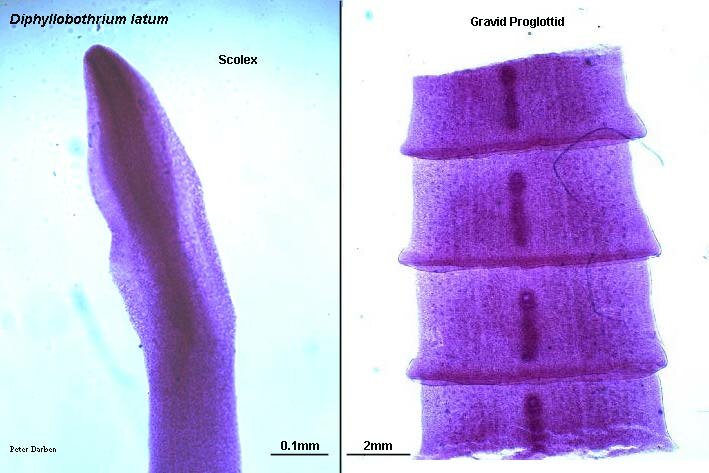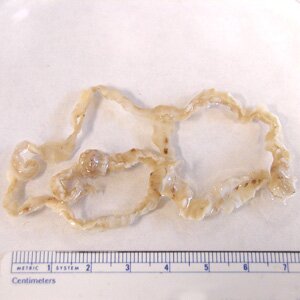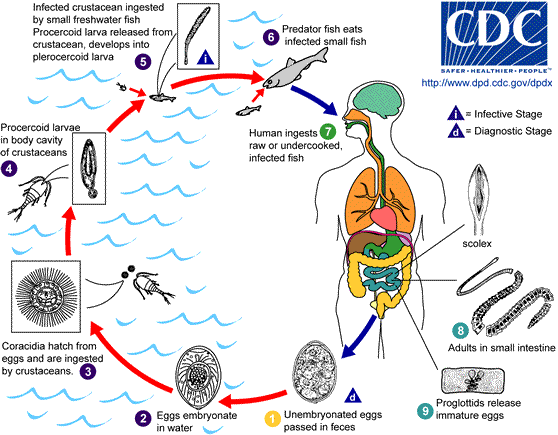Diphyllobothrium latum

 Diphyllobothrium latum. It occurs in Finland, Switzerland, France, Siberia and in the Great Lakes area near the USA and Canada border. The sources of infection are plerocerkoids, a few centimeter long worms-like larvas, parasitizing in freshwater fish. A mature female form is about 2-9 m. long and produces a substantial amount of eggs excreted with faeces. Diphyllobothrium is easily recognizable by microscopic stool examination. This type of tapeworm causes several non-characteristic general symptoms in the alimentary canal. 2% of hosts suffer from megaloblastic anemia caused by a considerable selective assimilation of vitamine B12 by the tapeworm.
Diphyllobothrium latum. It occurs in Finland, Switzerland, France, Siberia and in the Great Lakes area near the USA and Canada border. The sources of infection are plerocerkoids, a few centimeter long worms-like larvas, parasitizing in freshwater fish. A mature female form is about 2-9 m. long and produces a substantial amount of eggs excreted with faeces. Diphyllobothrium is easily recognizable by microscopic stool examination. This type of tapeworm causes several non-characteristic general symptoms in the alimentary canal. 2% of hosts suffer from megaloblastic anemia caused by a considerable selective assimilation of vitamine B12 by the tapeworm.
Taeniasis (taenia saginata) is the biggest cestodiasis in Europe caused by a custom of eating raw meat and considerable contamination of the environment by sewage.
Diphyllobothrium latum symptoms
- small bowel contractility
- hyperacidity
- decreased production of digestive enzymes
- appendicitis
- bile duct inflammation
- epigastric zone pains (pressing or sucking, especially in the morning)
- nausea
- loss of appetite
- loss of weight
- vomiting
- diarrhoea and constipation
- sleep disorders
- a feeling of pressure in the throat

Incoming search terms:
- diphyllobothrium latum
- ascaris lumbricoides life cycle
- life cycle of ascaris
- diphyllobothrium
- difilobotrium latum
- diphyllobothrium pacificum
- diphyllobotrium latum
- Ascaris life cycle
- Diphyllobothriums environment
- fotos difilobotrium latum





